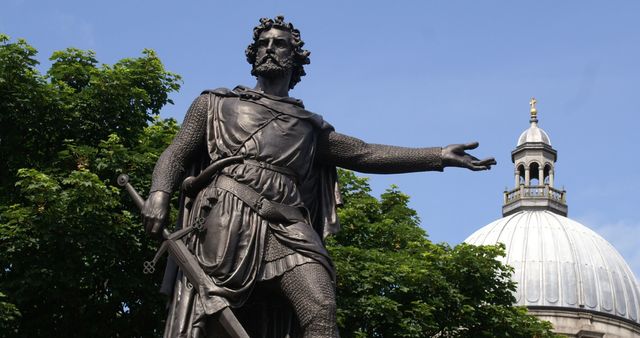
Professor Graeme Morton made it longer than expected. He got around twenty minutes into his speech before finally referencing the movie Braveheart—the reason most know the name William Wallace. “The wee man,” he said, referring to the film's lead actor, “was obviously much shorter than the one he portrayed.” But most of the crowd already knew quite a bit about the real-life Wallace, including his incredible height. Of all the lectures I attended at the Edinburgh Book Festival, Morton's crowd contained the highest percentage of Scots, all of whom were eager to see the facts of their great national hero parsed out from the legends that have overtaken him.
After the event, Morton spoke with us about his book, William Wallace: A National Tale, the reasons for the man's overwhelming popularity, and how even those without any Scottish blood can still identify with highlanders these days.
This interview has been edited down for length.
[caption id="attachment_13696707" align="alignleft" width="220"]

Graeme Morton
Graeme Morton: When I give that lecture in a longer form to students, often I start out with a picture—a wonderful bit of art of Mel Gibson—and say, "Okay, this is one version. This is somebody who's had a big impact, but there's an awful lot more to the story, and the impact of Wallace over the centuries." Braveheart is interesting because it's led to an appreciation of Wallace in the way that other authors, like Jane Porter or William Hamilton of Gilbertfield, have done in earlier periods.
BH: You mentioned several writers, including Diana Gabaldon, in your speech. You seem to be more accepting of historical fiction than a lot of academics.
GM: Yeah, there's actually a reappraisal going on at the moment of a very popular historian of the 1960s called John Prebble who wrote about Wallace. He wrote about the Jacobites and about Culloden, famously. It was often he was castigated, poo-pooed, because he wrote popular history. For a lot of the current generation of historians, that's how they themselves got into history—by reading these popular accounts….The Braveheart version is one that many people will just accept and understand, but there are also many people that will look beyond that, and I think that's encouraging.
BH: Your book is as much about Wallace's myth as it is about Wallace.
GM: Absolutely, yes. I look at what material actually exists on Wallace. He lived until about 35, but his years of activity are really from about 1295 to 1305, so you're looking at ten years of activity. Within that, 1297, 1298 he's very active, and he then disappears. We don't quite know what happened, but we think he goes off to France. There’s evidence he was in France. Not great evidence, but there's a little bit. Then, he comes back around 1303. He’s in and out, guerrilla activity, and basically in hiding until he's eventually betrayed in 1305. In terms of his real period of activity, it's 1297 and 1298—so 2 years, and then a little bit coming back again in the early 1300s.
He was leading the resistance, if you can use that term, against English invasion, so very important issues, but the longer-term impact over the next 10 or 20 years really didn't involve Wallace. It was Andrew Moray, who was fighting with them, and then Bruce who takes over. The immediate politics after [Wallace's] death really were not overly impacted by Wallace himself, but it's the later generations, the way that they've accepted him. Even Blind Harry and his interpretation of Wallace. The Bruce had his own [poet], he had Barbour. He did his own epic poem: Barbour’s The Bruce. And then you have Blind Harry's The Wallace. Two epic poems written around about the same time. Barbour's is much more historically accurate.
BH: So this is all propaganda then?
GM: Well, yeah. Well, there is some line of argument that when Bruce became King Robert I, he insured that, crudely, getting his historians to rewrite history. Removing references to Wallace and playing up his own role. It's a classic kind of, "I’m in power now. I’ve got to rewrite history... to show my own influence." There is some evidence of that.
BH: But now, historically, Bruce is kind of destined to be Wallace's foil.
GM: Well, I think it changes. In the 20th century, much of the 20th century—1950s and 1960s—Bruce is the figure. Bruce gets the main heritage center opened in 1964 by the Queen. If you notice, in Scotland, everywhere you see is a Saltire flag. Prior to the 1970s, it was the Lion Rampant. It was a red lion on a yellow background. A royal flag was used. Bruce epitomized the royal side of Scotland, and the royal house of Scotland.
BH: Why does Wallace's story seem to strike a chord so powerfully with Scots? Is it the self-made man? The underdog against overwhelming odds?
GM: Yeah, I think all these things are important. The self-made man is important. The fact that he was betrayed and could only be captured by betrayal. The fact that he did it purely for the nation, the argument being that he had no material gain from this, that he just put his own life on the line for fighting for Scotland. Later generations added the term “Wars of Independence." That wasn't used at the time….for Wallace, it was always— perhaps because of the weakness of the evidence—but it was about his own abilities, and people seeing his motives, people seeing him like a Che Guevara figure, as a freedom fighter.
BH: He has a universal appeal. You used a term I've never before: “Affinity Scots.” Someone who identifies with medieval Scottish history?
GM: It comes from the homecoming events that Scottish government has been putting on. Two most recent ones are the big ones: 2009, 2014. Homecoming was to encourage ancestral Scots—those who are descended from Scots who emigrated to America, to Canada, to Australia, to New Zealand, and have a blood link. People have done the genealogy and say, "Right, I'm actually a Scot. I'm a Scottish-American. I'm a Scottish-Canadian, so I'm going to come back in 2009, or most recently in 2014, and we're going to have a big series of events!”
There's also a group that have no blood link whatsoever. These are groups that are primarily coming out of Germany and Northern Italy, also parts of France, and these groups are interested in Clan gatherings. It's like Bavarian drinking events, so the beer is important. There are festivals where there might be marching bands, also bagpiping will go on. They're called “affinity” because they have affinity with Scotland. The research, the recent research, David Hesse has argued this, is that it's partly a rejection of the history of Europe, of central Europe, post-second World War. If you've got a long-term history, like the Third Reich, going back to the Second and First Reich, if you reject that ...
BH: I was just thinking that. The Germans, obviously, might want something else...
GM: If you reject that as your historical lineage, or you don't want to accept it, then—it’s not as crude as this—you can put it down to searching around for a more acceptable, plausible identity. Braveheart, Rob Roy, they're all part of the Highlander series and they're all part of this identification with Scotland.
BH: Can you please mention that Lego version of The Battle of Stirling Bridge you spoke about? That it's more historically accurate...
GM: The characters are correctly identified. The way that the battle happened is identified—because the important point is that the soldiers were invited halfway across the bridge, and then Scots attacked, and that's what happened. It's more accurate than Braveheart. In Braveheart, it's a land battle.
BH: Is there a place connected to Wallace's history that you particularly recommend? Something people overlook?
GM: I think you should always start with the National Wallace Monument, just because it sets the scene. It's in the right point. It's in the right place, and it's overlooking the battlefield. It's interesting because it looks across the river to Bruce on the other side, who's there on the ramparts of Stirling Castle. That's always the place that I think people should start….Look at Paisley Abbey, look at the stained glass window there where Wallace is presented as Samson, for example. It's a beautiful piece of stained glass, and that's worth going to see. Also, at Elderslie, where in the early 1910s, I think 1912, there was a statue built to Wallace, which again has a lovely frieze around it that shows all the various scenes from his life.






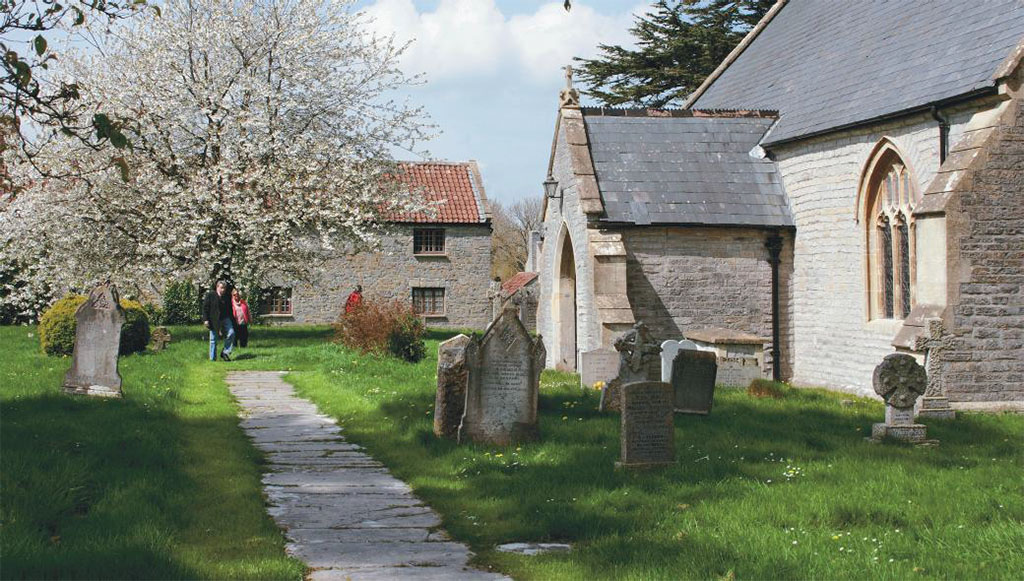
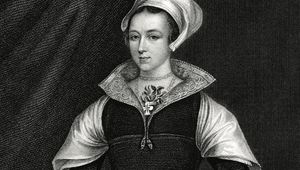
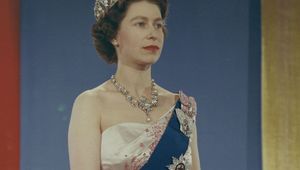
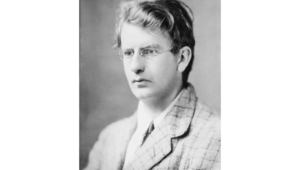
Comments